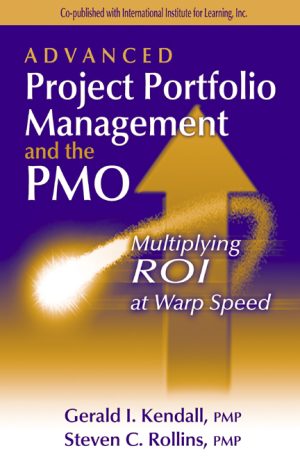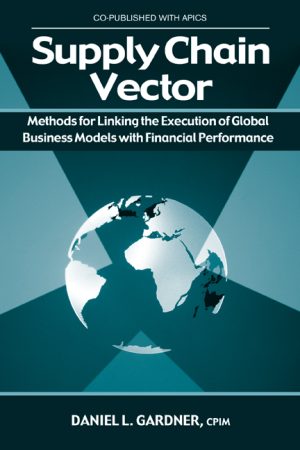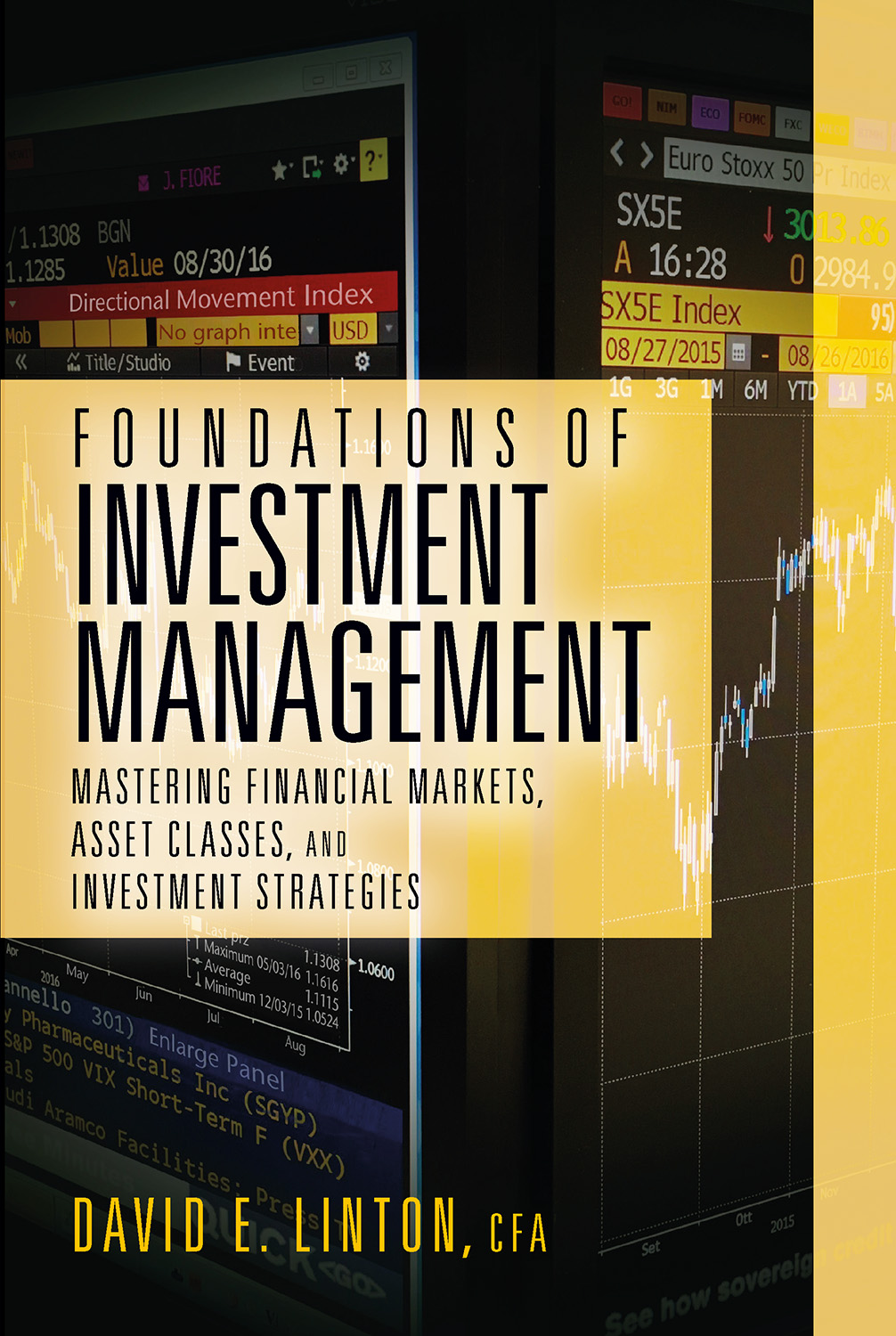Foundations of Investment Management
$49.95
Mastering Financial Markets, Asset Classes, and Investment Strategies
David E. Linton, CFA
Hardcover, 6×9, 458 pages
ISBN: 978-1-60427-165-2
January 2020
Description
Foundations of Investment Management: Mastering Financial Markets, Asset Classes, and Investment Strategies shows how to navigate today’s world of complex financial instruments, investment opportunities, and devastating pitfalls. This reader-friendly guide details stocks, bonds, and alternative investments, who invests in these asset classes, how, and why. It uses real-world examples in addition to citing the latest academic research. Additionally, seven industry experts have co-authored select chapters to greatly expand the depth and utility of this book for the reader. This unique guide is perfect for financial analysts, portfolio managers, client-facing representatives, product specialists, and anybody early in their finance career who wishes to understand how clients, products, and investors relate and interact.
Foundations of Investment Management provides a complete overview of the investment management industry; defines key terms and participants; identifies investment vehicles, strategies, and asset classes; and analyzes each strategy focusing on its relative utility and potential inclusion in a well-diversified portfolio. Despite the subject matter’s complexity, each topic is distilled in a way that is highly relatable and intuitive, ensuring the reader knows how to better manage their investments or interact with clients. Lastly, every chapter closes with a summary and investment implications to maximize the information presented.
Key Features
- Defines various fund structures, discusses the growth of the mutual fund industry, explains the benefits and disadvantages of comingled vehicles and details other investment options including fund of funds, annuities, and separately managed accounts
- Presents detailed descriptions of different institutional investors; elaborates on their investment considerations, objectives, and reaction functions; and concludes with implications for an institutions’ propensity to respond similarly to market developments
- Supplies tools and techniques to construct and optimize a fixed income portfolio
- Reviews the history of the Bank of England and U.S. Federal Reserve and describes central bank objectives, tools, and reaction functions
- Illustrates the difference between investing and speculating by introducing different valuation methods and approaches to developing an investment thesis
- Examines the growth of high frequency trading and identifies rebalancing strategies
- Identifies different stock investment approaches as well as introduces several equity valuation methods
- Describes mean variance optimization and conviction-based portfolio construction approaches
- Reviews bond basics including bond income, interest rate sensitivity, and sources of risk such as credit and liquidity
- Examines the history of real assets, defines each real asset, details the drivers of their return, and explains how an investor may gain exposure to each asset through the utilization of financial instruments or investment vehicles
- Presents the theory behind and history of factors and factor investing from both an academic and practitioner perspective.
- Presents the development of our understanding of behavioral biases, explains how these biases impact investment decisions, and provides tips and techniques to avoid their pitfalls
- WAV offers classroom-friendly Powerpoint slides for each chapter covering main points and investment implications, simple optimization examples, a special online-only chapter of the book, and several of the book’s most insightful exhibits—available from the Web Added Value Download Resource Center
About the author(s)
David E. Linton is the Director of Portfolio Construction and Manager Research at Pacific Life Fund Advisors LLC (PLFA). In his current role, he is responsible for the portfolio construction of the $32 billion PLFA suite of asset allocation products, and he shares responsibility for the manager research and due diligence for roughly $40 billion in sub-advisory relationships. Additionally, David is a member of the PLFA Investment Committee and Asset Allocation group, specializing in fixed income, and he is the lead trader for the $1.2 billion Pacific Funds Multi-Asset Fund.
Prior to joining PLFA, Mr. Linton was a Vice President and Portfolio Manager at PIMCO. While there, he worked in a variety of capacities and his responsibilities included co-managing PIMCO’s overnight cash investing and financing book on the Short-Term Desk, working as a sovereign credit analyst on the Emerging Markets Desk, and trading investment grade non-financial corporate bonds on the Investment Grade Corporate Desk. David was also a Product Manager and member of the PIMCO Solutions group with a focus on Tail Risk Hedging.
Mr. Linton is a CFA® charterholder, has a BS in Business Administration from the University of Southern California, graduating magna cum laude, and an MBA from the University of Chicago Booth School of Business, graduating with honors.
Table of Contents
Part I. Markets, Vehicles, and Participants
Chapter 1: Financial Assets and Capital Markets with Stephen G. Moyer, CFA, Adjunct Professor, USC Marshall School of Business
Chapter 2: Investment Vehicles
Chapter 3: Institutional Investors with Matthew Brenner, Managing Vice President, ICMA-RCTBD
Chapter 4: Global Central Banks and the Federal Reserve
Part II. Investing and Portfolio Construction
Chapter 5: Investment Strategies with Ben Emons, Managing Director, Medley Global Advisors
Chapter 6: Equity Investing with Di Zhou, CFA, FRM, Portfolio Manager and Managing Director, Thornburg Investment Management
Chapter 7: Fixed Income Investing
Chapter 8: Real Asset Investing with Bob Greer, Scholar in Residence, J.P. Morgan Center for Commodities at the University of Colorado Denver Business School, Senior Advisor, Core Commodity Management
Chapter 9: Hedge Funds with Andrew Ross, CFA, FRM, CAIA, Senior Director, Investment Risk and Structured Products, Pacific Asset Management
Part III. Recent Advances in Finance and Investing
Chapter 10: Factor Investing and Smart Beta with Daniel Villalon, CFA, Managing Director, Portfolio Solutions Group AQR
Chapter 11: Behavioral Finance
Bibliography
Index
Reviews
“David Linton is the epitome of a scholar practitioner. He understands the theory, the real world, and how the two interact. Foundations of Investment Management is a comprehensive examination of the process of investing that covers key investment instruments, the markets they trade in, and their role in portfolio construction. Although detailed, it is written in a style that is accessible to non-professionals. Experienced investors will also benefit from insights on the interrelationships between macro-economics, regulators, and markets, and how the keen mind of an experienced investor works. This book will benefit anyone looking to improve their knowledge of, and skill at, investing.”
—Stephen G. Moyer, CFA, Adjunct Professor, University of Southern California, Author of the best-selling Distressed Debt Analysis
“David straddles the theoretical concepts of finance into practical investment material. In the current environment of low interest rates and record high equity markets, David’s framework provides a useful guide to navigate the treacherous financial waters of passive and active portfolio management.”
—Ben Emons, Managing Director, Medley Global Advisors, Author of Mastering Stocks and Bonds, The Financial Domino Effect, and The End of the Risk-Free Rate
Related products
-

Distressed Debt Analysis
Retail Price: $119.95$99.95 Add to cart -

Financially Focused Project Management
Retail Price: $54.95$44.95 Add to cart -

Achieving Project Management Success Using Virtual Teams
Retail Price: $49.95$39.95 Add to cart -

Advanced Project Portfolio Management and the PMO
Retail Price: $74.95$59.95 Add to cart -

Supply Chain Vector
Retail Price: $59.95$44.95 Add to cart



